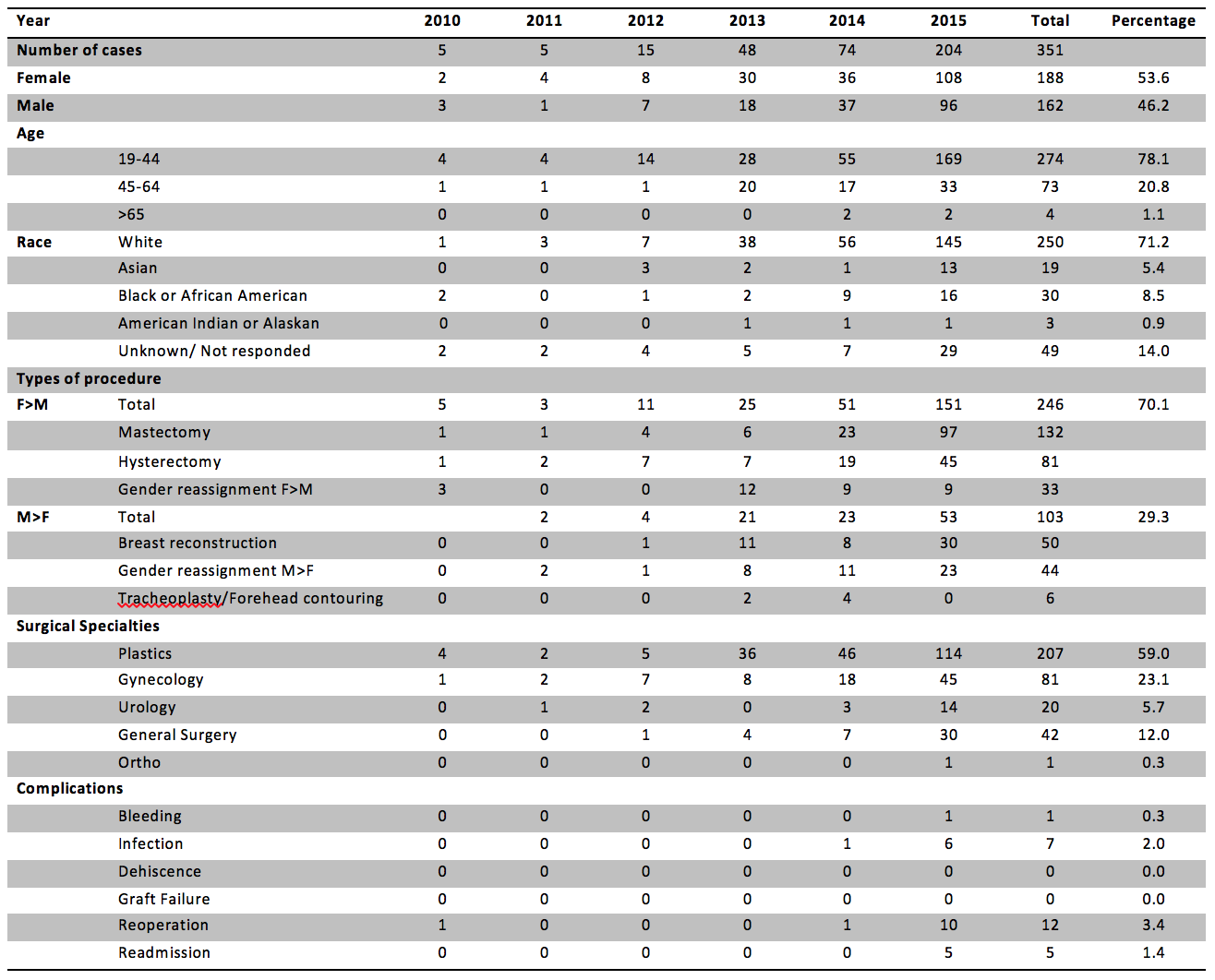Gender Reassignment Surgery: A Synopsis Using American College of Surgeons National Surgery Quality Improvement Program (ACS-NSQIP)
Bao Ngoc N. Tran, MD, Adam Tobias, MD, Bernard T. Lee.
Beth Israel Deaconess Medical Center, Boston, MA, USA.
Background: Gender reassignment surgery (SRS) is defined as a procedure by which a transgender person undergoes to alter their appearance and function to match their self-perceived gender. There is paucity of literature on the outcomes and safety profile of SRS. This study aims to examine trends and outcomes of SRS from 2010-2015 using American College of Surgeons National Surgery Quality Improvement Program (NSQIP) database.
Methods: Patients with gender dysphoria as the primary diagnosis code at the time of surgery were identified using ICD 9 codes 302, 302.85 and their corresponding ICD 10 code F64.1. Descriptive data about patients' demographics, types of procedures, surgical specialty performing the surgery, and perioperative complications including bleeding, infection, wound dehiscence, graft failure, unplanned reoperation, and readmission were obtained.
Results: There were 351 SRS cases identified from 2010-2015, 5 cases from 2010, 5 from 2011, 15 from 2012, 48 from 2013, 74 from 2014, 203 from 2015. The majority of the cases were female to male surgery, 246 cases (70.1%); including mastectomy (37.6%), hysterectomy (23.1%), and phalloplasty (9.4%). Male to female cases were 103 (29.3%), including breast reconstruction (14.2%), vaginoplasty (12.8%), and facial feminization (1.7%). The majority of the cases were performed by plastic surgeons (59%) followed by gynecologists (23.1%), general surgeons (12%), urologists (5.7%), and orthopedic surgeons (0.3%). Perioperative complication profile showed incidence of bleeding 0.5%, infection 2%, unplanned reoperation 3.4%, readmission (1.4%). No wound dehiscence or graft failure were observed.
Conclusions: The marked increase in SRS presentation in a national database in the last 5 years reflects its rising popularity. Overall, female to male procedures dominate which also corresponds to national trend. The low perioperative complication rates are reassuring. Further studies are much needed to understand and improve the outcomes of this thriving subspecialty in surgery. 
Back to 2017 Program




